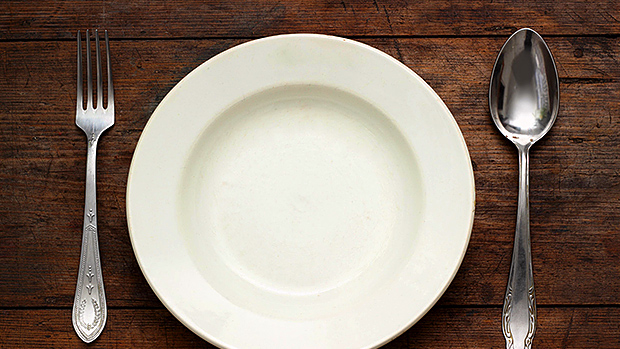Powerlifting Heresy
It's borderline heresy that I even considered writing this article. As if being a lightweight powerlifter wasn't bad enough, my actions here will probably get me ostracized by the powerlifting community. Yes, folks, I'm a powerlifter writing a nutrition article.
 |
A while back, I presented my 5 Relative Strength Myths article and noted that anyone can gain strength if he's willing to simply add body weight. It'll shorten your range of motion and, more importantly, a muscle with a larger cross sectional area will be stronger than a smaller muscle (when neural contributions to strength remain constant).
While bodybuilders and heavyweight strength sport competitors have nothing to worry about on this front, those lifters with strict weight class limitations must keep a close eye on their body weights. Likewise, given that success in the overwhelming majority of athletic endeavors is dependent on your relative strength, countless other classes of athletes can sympathize with these "lightweights."
In this article I'll detail how my training, nutrition, and supplementation are all closely interrelated. This program serves as a starting point for athletes in the off-season and anyone who simply wants to improve relative strength to avoid the "all show and no go" phenomenon that plagues the world's gyms today.
The 5 Goals
Here are the five goals with this protocol:
1. Get stronger in all four weeks of the month.
2. Get slightly leaner in two weeks of the month.
3. Allow for a bit of a caloric surplus two weeks of the month to provide for more rapid strength gains.
4. Control insulin.
5. Gradually build general physical preparedness (GPP) without relying on muscular endurance protocols that'll interfere with development of more important strength qualities (relative to the time of year in the case of the off-season athlete).
A Month in the Life
I plan my training in four-week phases, relating total training stress with a calculation I call the "adjusted volume-intensity score." It's a nightmare of an equation that I developed after a 3AM revelation while on a soul-searching trip to the Himalayas in the midst of winter. Or, I might've just figured it out when I was doodling in a notebook during a grad school class and stumbled onto it.
In any event, this score is based on an equation that takes into account sets, reps, exercise complexity (e.g. deadlifts vs. curls), intensity (98% 1RM vs. 85% 1RM), speed of execution, accommodating resistance (bands, chains, weight releasers), and miscellaneous factors (limited range of motion, imperfect training/uneven loading, isometric holds, energy systems training).
With this equation, I can calculate the particular stress a rep, set, total session, entire week, and entire month have on my system. We don't need to concern ourselves with my fetish for complexity right now, though.
Through experimentation, I've found that the best approach for me is to stagger my overall training stress in the following format:
Week 1: High (100%)
Week 2: Medium (80%)
Week 3: Very High (planned overreaching, 115-120%)
Week 4: Low (60%)
The set-up contrasts with that of many bodybuilders who either a) build volume in a linear fashion over several weeks and then back off or b) never back off because they really aren't that bright. Remember, I'm focused on performance, so I find that the medium volume in the second week gives me that subtle reduction in training stress that temporarily recharges me before I beat myself like an old rug with crazy high stress in the third week.
 |
Week four is tons of fun. I essentially get to be lazy and gain strength. Once this week of indolence is complete, I get off my arse and return to a "normal" training stress week (defined as Week 1, or 100%) as part of my next phase. Sarcasm aside, I should note that I'm still training in my low stress week; I just pare back on some or all of the factors in my training stress equation.
Now, here's the kicker. My medium and low weeks are designed to fulfill goal number two from above – get slightly leaner. Meanwhile, the goal (number three from above) during the high and very high stress weeks is to provide my system an extra kick in the pants from a nourishment standpoint to get the strength gains coming along a little more quickly (but still with a conscious eye on keeping my body weight and body fat percentage down).
It might seem counterintuitive that I'm looking to lean out when training stress is lowest, but you'll understand why in a bit.
The Training-Nutrition Interplay
It's pretty obvious that my activity level varies tremendously from week to week. So how do I accommodate these fluctuations with my diet?
Well, first, I should outline my training split. As you can see, I adhere pretty closely to a classic Westside template:
Sunday: Dynamic Effort Squat/Deadlift Training
Monday: Bench Assistance Training (lockout emphasis)
Tuesday: Recovery Sessions*
Wednesday: Max Effort Squat/Deadlift Training
Thursday: Recovery Sessions
Friday: Max Effort Bench Training
Saturday: Rest (optional light activity)
* Recovery sessions typically consist of dynamic flexibility, very light resistance training, and some low-intensity cardiovascular activity as outlined in Cardio Confusion. I'll also incorporate some walking or other low-intensity activity here and there in addition to what's noted above, especially during low and medium stress weeks. (Remember, nobody overtrains from going for a walk.)
Logically, I'm going to require more total calories during my highest training stress weeks. So, with my "baseline" high stress week, things are structured as follows:
Sunday
Upon rising, protein and fat meal with minimal carbs (veggies).
During and after 10AM-12PM training (yes, powerlifters tend to take their time on Sundays): 2 scoops Surge.
1PM, 3:30PM, 6PM, 8:30 PM: "Clean" carb-up meals in approximately a 2:1 carb: protein ratio. These make football season more fun, trust me!
11PM: 2 scoops Low-Carb Grow!, natural peanut butter, and fish oil.
Monday
Protein and fat meals with minimal carbs (veggies) all day long.
Only significant carb source is Surge (2 scoops during training session, which may be mid-afternoon or evening).
Breakfast and first post-training whole food meals are the largest of the day.
Tuesday
Protein and fat meals with minimal carbs (veggies) all day long.
Only significant carb source is 1 scoop Surge with 1 scoop Low-Carb Grow! immediately following my recovery session (mid-afternoon).
Breakfast and first post-training whole food meals are the largest of the day.
Wednesday
Protein and fat meals with minimal carbs all day long.
6PM-7PM: Surge (2 scoops during training session, which may be mid-afternoon or evening).
8PM: One clean carb meal at 2.5:1 carb to protein ratio.
11PM: 2 scoops Low-Carb Grow!, natural peanut butter, and fish oil.
Thursday
Same as Tuesday
Friday
Protein and fat meals with minimal carbs all day long.
Only significant carb source is Surge (2 scoops during training session, which is at 6PM).
Breakfast and first post-training whole food meals are the largest of the day.
Saturday
Protein and fat meals with minimal carbs (veggies) all day long. Yes, 95% of the U.S. dieticians are gasping in horror right now. Incidentally, they're all fat and weak, too. The other 5% are those who actually know their stuff, or they just weren't paying attention.
Calories and Options
You might be surprised to know that I don't count calories. In fact, none of my clients do, either. Energy expenditure is on a minute-to-minute basis; 24-hour energy expenditure doesn't tell me anything about how those calories are divided up. There are much better things in life to worry about than caloric consumption. There's no need to be stressing about a number associated with what you eat when you've got a job, children, bills to pay, and you can't remember where you put your damn car keys.
Believe it or not, this article isn't straying from powerlifting mentality that much at all. Simplicity took over. In my experience, there's actually an inverse relationship between the amount of time you spend counting calories and how strong you are. Seriously. The strongest people and most successful athletes are the ones who have learned to eat instinctively. It frees up more time to plan training and relax to aid in recovery.
 |
So, with that said, how do I switch things up over the course of different training stress weeks? There are several options:
1. Drop the carb-up meal on Wednesday night during low stress weeks and decrease the number of carbs consumed at this meal during medium stress weeks. Increase the size of it during very high stress weeks, or simply have an extra protein and carb meal right before bed.
2. Shorten the duration of the Sunday carb-ups for low stress weeks (two meals only) and decrease portion sizes for the last two meals in medium stress weeks. In the very high stress week, I increase portion sizes and "go for broke."
3. Take in slightly more Surge during very high stress weeks and slightly less during low and medium weeks (I make up the difference with vanilla Low-Carb Grow!).
4. Pare back on fat intake slightly in meals during the day throughout the week during the low and medium stress weeks. It's important not to take the caloric deficit too far in these instances, as the body still needs sufficient calories to rebound from the higher training stress weeks (call it supercompensation, for brevity's sake). If you feel like you're dieting, chances are that you're being too aggressive in this regard. I don't miss a beat; it isn't even noticeable.
5. Increase the duration and/or frequency of low-intensity recovery work during low and medium volume weeks. Decrease the duration and/or frequency of these sessions during high and very high weeks.
This manipulation is absolutely crucial to the success of the low and medium volume weeks. By keeping these sessions low-intensity, they don't serve as "true" training stresses. They're providing notable energy expenditure without interfering with recovery, helping to bring you to a subtle energy deficit. Again, you shouldn't even notice it.
Where To Go From Here
I'll be the first to admit that this is a necessarily broad template. I can't overstate the importance of realizing that this is a jumping off point. Some will tolerate carbs much better than I do. Those with different body weights will need to modify total intake accordingly. You may also choose to set up a training split that puts your carb-ups on days that you train your weaknesses.
The point is that if you want to make exceptional progress you need to do something exceptional – and that doesn't entail following a cookie-cutter nutrition program that has you eating "X" calories per pound of body weight independent of total training stress and the goals of the lifter. The ultimate measure of a program's success isn't its appearance on paper, but the results it delivers. Sometimes, you need to play "guess and check."
Give this program a try, and then tinker with future programming based on the results you attain!



